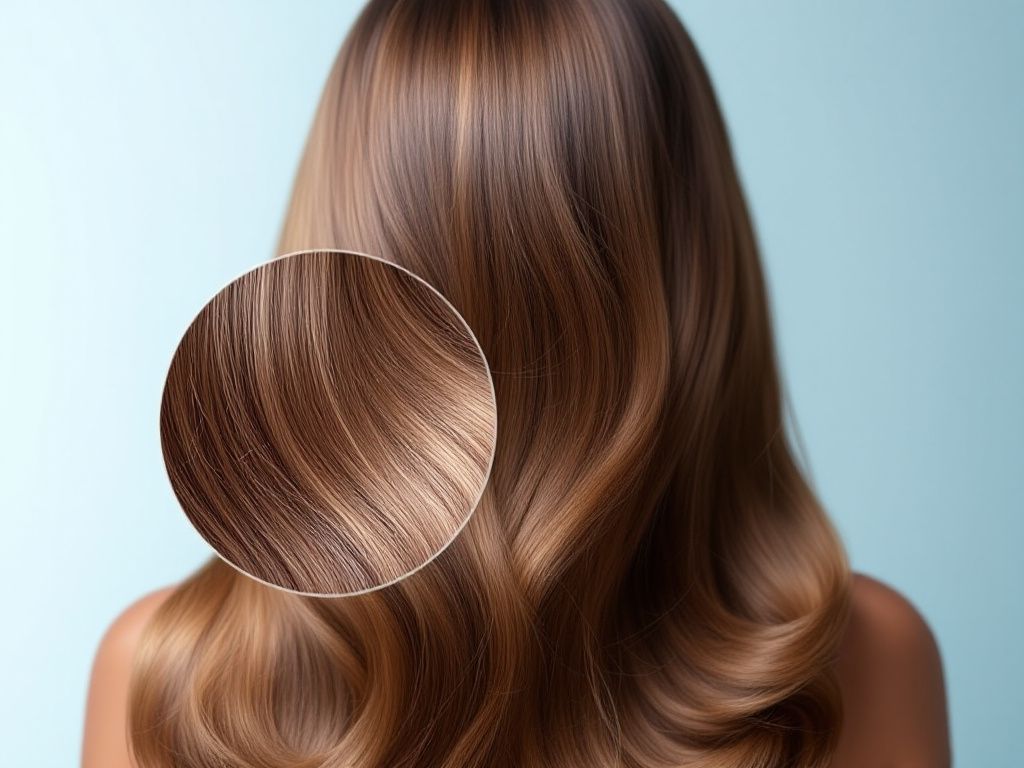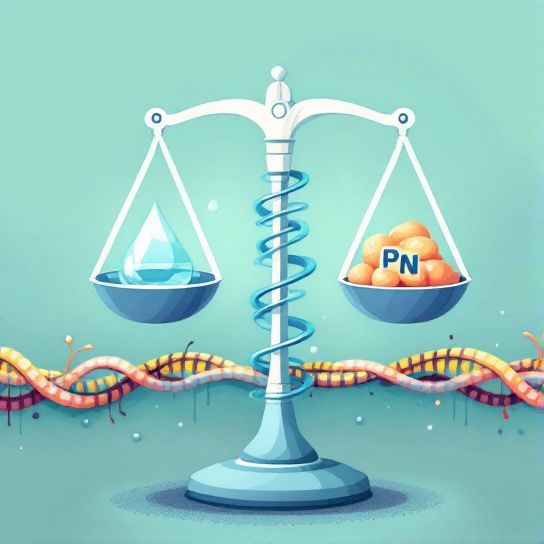
Picture this: You’ve just spent countless hours and a small fortune on various hair treatments and products, all in the pursuit of flawless tresses. Yet, your hair still doesn’t seem right—it’s too limp, too brittle, too… something. Sound familiar? You’re not alone. Many find themselves bewildered by their mane’s behavior. Well, let’s dive into what might be the root cause (pun intended) of your hair woes—achieving the right moisture and protein balance.
Why the Moisture Protein Balance Matters
Navigating the world of hair care is a bit like a balancing act. Ever wonder why your hair goes from fabulous to frizz-fest with just a few misplaced rainy-day steps? Getting this balance between moisture and protein is crucial, and it’s the key to a good hair day every day. Trust me, understanding this can transform your entire hair routine.
Moisture keeps your hair hydrated and flexible, preventing brittle strands that snap and crackle. Protein, on the other hand, gives your hair structure and strength. Without it, your hair would be mushy and lifeless. Too much of either, though, and you’re trudging through textured terrain with lackluster locks.
What Causes Imbalance, Anyway?
Many factors throw this balance off. Environmental conditions like humidity or harsh sun, your diet, your hair type, and even your trusty hair styling routines all play a role. It’s not a one-size-fits-all situation; different hair types and conditions will need different care. Here’s a bit more on how you might get it wrong, purely by accident:
- Too Much Moisture: It can occur if you’re a leave-in conditioner junkie or if your hair tends to be naturally porous. While it might feel soft initially, hair tends to get stretchy and fragile over time.
- Excess Protein: Often comes from relentless use of protein-packed products trying to shore up what once were weak strands. Hair ends up stiff and brittle. Balance gone awry, friend!
Spotting the Signs of Imbalance

You, too, can become a hair detective! Identifying which way your balance tilts is your first big step toward those envious celebrity-like locks.
Symptoms of Too Much Moisture
- Floppy and Soft: Sure, it feels nice, but it’s like the pudding in Goldilocks—you want it just right.
- Gummy Hair: When strands become kind of sticky and don’t bounce back after a gentle tug.
- Excessive Frizz: Especially in high humidity; it’s like your hair is reaching out for more water.
Signs of Protein Overload
- Stiff Strands: Like a soldier standing to attention, your hair shouldn’t make you nervous to comb it.
- Snaps Easily: Protein drives strength, but overdoing it leads to breakage. Remember, yarn is thicker but still snaps.
- Rough Texture: Instead of straw in the scarecrow, yearn for silky smooth scare from your locks.
Finding Your Balance: The Mini Guide
Now, let’s talk about how you navigate this tightrope walk of hair nirvana. Achieving the moisture protein balance requires an ongoing conversation with your mane—listening and adjusting.
1. Know Your Hair Type
First things first, let’s get familiar with what we’re working with here. High-porosity hair might drink up moisture faster than you can say “deep conditioner,” while low porosity locks may need a little more proteic persuasion.
2. Check-in with Your Strands
Feel it, study it in daylight akin to a scientific examination. This isn’t a once-off activity—it’s regular feedback on the season of your hair.
3. Product Parade

This is where you really need a discerning eye.
- Moisture-Rich Products: Include hydration-oriented products in your routine, especially if facing dryness.
- Protein-Focused Solutions: Incorporate protein treatments sensibly, typically determined by the damage already present.
4. Special Care in Wash and Style
Even your wash day routine needs synchronizing. Rotate proteins and moisture in your chosen shampoo and conditioning regimen. Yes, it can be that simple, and alternating these essentials can revitalize your strands.
5. Trial and Error
You’ll never learn until you try, which sometimes means playing around with different products and techniques. Encouraging a little patience and perseverance will eventually lead you to the right formula.
Real-Life Application: A Sample Routine
Let’s say you’ve discovered your hair is over-moisturized. Here’s a routine you might follow:
- Day One: Shampoo with a protein-rich shampoo for strength.
- Condition with Care: Use a light conditioner, not leaving it on for too long.
- Enhance with Heat: You might gently heat-protect and style with a moderate temperature. Don’t crank it up!
- Break: Rest days when you minimize wet styling.
- 5. **Mid-Week Refresh: Sulfate-free and silicon-light washes with proper balancing conditioners. Stay away from that deep moisturizing mask for now.
- 6. **Weekly Protein Treatment: A good restorative deep-protein soak will add vigor as required.
Unraveling Myths
Alright—time to dispel some hair myths.

Myth 1: Protein is Stronger, So More is Better
Not always! Excess doesn’t translate to health; rather the right ratio does. Imagine overloading a bridge with inordinate weight. It crumbles.
Myth 2: Your Routine Never Needs Changing
Actually, seasons, age, hormones—all call for different tweaks. Continuously assessing the moisture protein balance of your hair will cater to its needs as time naturally shifts.
Myth 3: Thick Hair = Overload Risk, Thin Hair = Lacking
That’s an oversimplification. Even voluminous curls can face moisture shortage, while fine hair can struggle against its own load’s cynicism. Read your hair, not the hair gossip.
The Ultimate Takeaway
Paying attention to what your hair needs and adjusting accordingly brings harmony to your hair’s moisture protein balance. Remember that it’s fluid—the needs today may not match those of tomorrow. Be synchronized and adaptable.
Conclusion
It’s all about creating that delicate balance. Just like life gives you lemons and sometimes demands orange juice, so does your hair require a similar agility. Words to live by are, “Listen to your hair.” Friend, you’ll find true love in those strands as they sway perfectly when the balance is realized. And trust me, the world is your concert hall with those luscious strands taking the spotlight.
So go forth, analyze, experiment, rinse, and repeat until you find your own sweet spot. Your hair deserves to be just as dynamic as you are!
Frequently Asked Questions
What is the importance of moisture-protein balance in hair care?
The moisture-protein balance is crucial for maintaining healthy hair. It ensures that your hair has the right amount of strength and structure from protein, while also retaining the necessary moisture to stay soft and smooth. An imbalance can lead to issues such as hygral fatigue from excessive moisture or brittleness from too much protein[1][3][5).
How can I determine if my hair needs more protein or moisture?
To determine if your hair needs more protein or moisture, you can perform a simple elasticity test. Take a strand of dry hair and gently pull at the sides. If the hair stretches gently and bounces back, it is well-balanced. If it doesn’t stretch or snaps and breaks, it is in protein overload. If it keeps stretching without bouncing back and eventually falls apart, it is in moisture overload[4][5][3).
What are the signs of moisture overload and protein overload in hair?
Signs of moisture overload include hair that feels limp and dull, with split ends when dry. This indicates that the hair cuticles are overworked from excessive hydration. Signs of protein overload include hair that feels stiff, weak, and easily tangled. In severe cases, the hair may snap or break when stretched[1][4][5).
How can I restore the moisture-protein balance in my hair?
To restore the balance, start by removing product build-up with a clarifying shampoo. For moisture overload, use protein-rich products such as protein treatments or conditioners. For protein overload, focus on protein-free products and use deep conditioners to restore moisture. Adjust your shampoo and conditioner routine accordingly, and consider seasonal changes in your hair care needs[1][4][5).
References


Leave a Reply